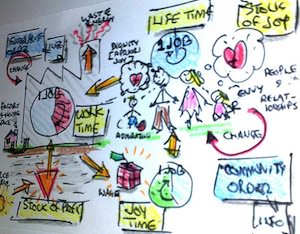California to Give the Working Poor a Raise
The state of California is about to become the first in the nation to set a $10 an hour minimum wage, which could help alleviate the financial woes of some 1.5 million low-wage workers there.
As fast-food restaurant workers continue to press for a $15 an hour minimum wage, California is poised to be the first in the nation to set a $10 an hour minimum wage for all types of work. And although the hike — still awaiting Gov. Jerry Brown’s likely signature — won’t go into full effect for two years, it still stands to help bolster the skimpy income of hundreds of thousands of families.
According to The Sacramento Bee, some 1.5 million full-time workers in the state currently earn less than $10 an hour — and some 900,000 of them are over age 30. Predominately Latino with a high school degree or less, the low-wage workers also spend a disproportionate share of that income on housing: “Most low-wage workers rent their homes. Experts advise to keep rental costs below one third of income. About one-quarter spend more than half of their household income on rent. Another quarter spend more than a third of their income on rent.” And note that these stats are just for full-time workers.
The business community, not surprisingly, opposes the hike as a “job-killer,” which is their Pavlovian response to anything that would increase wages. Yet the Los Angeles Times reported in a recent editorial that studies show the “job killing” argument doesn’t pan out.
The best available research, however, shows that previous increases in the minimum wage haven’t decreased or increased hours or jobs in any statistically significant manner. Employers have adapted in a variety of ways, including boosting productivity and trimming raises for other workers. And a higher minimum wage tends to keep workers on the job longer, reducing the costs associated with training new employees.
One other way employers have responded is to pass at least part of the increase on to consumers. In a sense, though, employers in minimum-wage industries are already passing on part of their costs to taxpayers, who pick up the tab when workers earn so little that they qualify for Medicaid and food stamps. A recent congressional study estimated that low-wage workers at one Wal-Mart superstore receive about $5,800 worth of safety-net benefits each annually. By raising the minimum wage, shoppers will pay some of those costs at the cash register, not on their tax bills.
All of this comes against a backdrop of what seems like a re-energized labor movement, which has taken a shellacking over the years. Low wages and objectionable working conditions have helped radicalize some workers. But whether that turns into widespread pressure and momentum is the big question mark.
—Posted by Scott Martelle.
Your support matters…Independent journalism is under threat and overshadowed by heavily funded mainstream media.
You can help level the playing field. Become a member.
Your tax-deductible contribution keeps us digging beneath the headlines to give you thought-provoking, investigative reporting and analysis that unearths what's really happening- without compromise.
Give today to support our courageous, independent journalists.






You need to be a supporter to comment.
There are currently no responses to this article.
Be the first to respond.